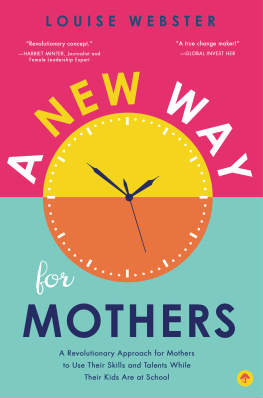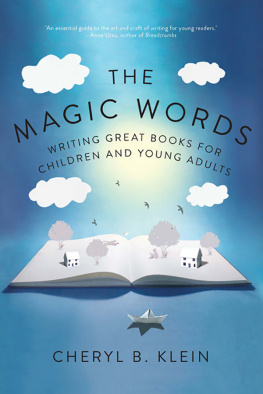Cheryl L. Meyer - Mothers Who Kill Their Children
Here you can read online Cheryl L. Meyer - Mothers Who Kill Their Children full text of the book (entire story) in english for free. Download pdf and epub, get meaning, cover and reviews about this ebook. year: 2001, publisher: New York University Press, genre: Home and family. Description of the work, (preface) as well as reviews are available. Best literature library LitArk.com created for fans of good reading and offers a wide selection of genres:
Romance novel
Science fiction
Adventure
Detective
Science
History
Home and family
Prose
Art
Politics
Computer
Non-fiction
Religion
Business
Children
Humor
Choose a favorite category and find really read worthwhile books. Enjoy immersion in the world of imagination, feel the emotions of the characters or learn something new for yourself, make an fascinating discovery.

- Book:Mothers Who Kill Their Children
- Author:
- Publisher:New York University Press
- Genre:
- Year:2001
- Rating:4 / 5
- Favourites:Add to favourites
- Your mark:
- 80
- 1
- 2
- 3
- 4
- 5
Mothers Who Kill Their Children: summary, description and annotation
We offer to read an annotation, description, summary or preface (depends on what the author of the book "Mothers Who Kill Their Children" wrote himself). If you haven't found the necessary information about the book — write in the comments, we will try to find it.
Mothers Who Kill Their Children — read online for free the complete book (whole text) full work
Below is the text of the book, divided by pages. System saving the place of the last page read, allows you to conveniently read the book "Mothers Who Kill Their Children" online for free, without having to search again every time where you left off. Put a bookmark, and you can go to the page where you finished reading at any time.
Font size:
Interval:
Bookmark:
Thank you for buying this ebook, published by NYU Press.
Sign up for our e-newsletters to receive information about forthcoming books, special discounts, and more!
Sign Up!
A publisher of original scholarship since its founding in 1916, New York University Press Produces more than 100 new books each year, with a backlist of 3,000 titles in print. Working across the humanities and social sciences, NYU Press has award-winning lists in sociology, law, cultural and American studies, religion, American history, anthropology, politics, criminology, media and communication, literary studies, and psychology.
MOTHERS WHO KILL
THEIR CHILDREN
THEIR CHILDREN
UNDERSTANDING THE ACTS OF MOMS FROM
SUSAN SMITH TO THE PROM MOM
Cheryl L. Meyer and Michelle Oberman
with
Kelly White, Michelle Rone, Priya Batra,
and Tara C. Proano

NEW YORK UNIVERSITY PRESS
New York and London
2001 by New York University
All rights reserved
Library of Congress Cataloging-in-Publication Data
Meyer, Cheryl L., 1959
Mothers who kill their children : understanding the acts of moms
from Susan Smith to the Prom Mom / Cheryl L. Meyer and
Michelle Oberman; with Kelly White [et al.].
p. cm.
Includes bibliographical references and index.
ISBN 0-8147-5643-3 (alk. paper)
ISBN 0-8147-5644-1 (pbk.: alk. paper)
1. Filicide. 2. Infanticide. 3. Women murderers. 4. Mothers
Psychology. 5. MothersSocial conditions. I. Oberman,
Michelle. II. White, Kelly. III. Title.
HV6542 .M48 2001
364.15'23'0852dc21 2001002177
New York University Press books are printed on acid-free paper, and their binding materials are chosen for strength and durability.
Manufactured in the United States of America
10 9 8 7 6 5 4 3 2 1
To our mothers, and mothers everywhere,
in homage to the sheer force of will, resilience, and
eternal hope they show in undertaking to love,
in spite of all that stands in their way.
We would like to thank our partners and our families for their patience and love. Without them, this book might have been written, but it would have lacked a soul. We are also indebted to our coauthors Michelle Rone, Tara Proano, Priya Batra, and Kelly White for their long hours of research and their collaboration through the equally long process of writing and editing. We are grateful to our respective institutions, DePaul University and Wright State University, for generous support during the completion of this project. Finally, we are thankful to our editor, Jennifer Hammer, whose encouragement inspired us along the way to completion.
A Brief Cross-Cultural History of Infanticide
There is every reason to believe that infanticide is as old as human society itself, and that no culture has been immune. Throughout history, the crime of infanticide has reflected specific cultural norms and imperatives. For instance, infanticide was legal throughout the ancient civilizations of Mesopotamia, Greece, and Rome, and was justified on grounds ranging from population control to eugenics to illegitimacy.
Historians of infanticide cite a host of factors associated with the incidence of this crime: poverty, overpopulation, laws governing inheritance, customs relating to nonmarital children, religious and/or superstitious beliefs regarding disability, eugenics, and maternal madness.of disabled or otherwise ill-fated newborns in ancient Greece, for example, and the practice of female infanticide in modern-day India.
Nonetheless, a close examination of the circumstances surrounding infanticide reveals a profound commonality linking these seemingly unrelated crimes. Specifically, infanticide may be seen as a response to the societal construction of and constraints upon mothering. Factors such as poverty, stigma, dowry, and disability are significant because they foretell the impact that an additional baby will have upon a mother, as well as upon her existing family.
Infanticide is not a random, unpredictable crime. Instead, it is deeply imbedded in and is a reflection of the societies in which it occurs. The crime of infanticide is committed by mothers who cannot parent their child under the circumstances dictated by their unique position in place and time. These circumstances vary, but the extent to which infanticide is a reflection of the norms governing motherhood is a constant that links seemingly disparate crimes.
Nonetheless, even a cursory survey of cases involving women who kill their children reveals enormous variation in the circumstances surrounding these crimes. However, there is very little systematic research that identifies the patterns associated with such killings. This book sets out to identify clear distinctions among the cases of contemporary women who kill their children, shedding light on why some women commit such acts and what intervention strategies might be helpful in preventing the deaths of other children in the future.
We begin with a historical survey, for it is our belief that if we are to make sense of the persistence of infanticide in contemporary society we must understand the manner in which cultural norms have shaped this crime throughout history. Toward that end, this chapter provides a brief chronological review of the sociocultural imperatives underlying the crime of infanticide in various cultures. We do not seek to provide a comprehensive record of the crime of infanticide. Rather, we wish to illustrate the intricate relationship between a societys construction of parenthood and mothering, and its experience of infanticide.
Anthropologists maintain that prehistoric societies routinely practiced infanticide. The killing of newborns was a means of minimizing the strain on societies with limited resources. Thus, according to anthropologists, disabled or sickly children were particularly at risk of infanticide, as were female children who were viewed as a source of future population growth. Over time, civilizations emerged. An examination of their histories reveals the cultural norms that shaped their varying practices of infanticide. Several civilizations have particularly well-documented histories of infanticide, which illustrate how the prevalence of infanticide may be driven by the sociocultural construction of motherhood.
The earliest mention of infanticide in recorded history relates to disabled newborns, and was committed almost exclusively by fathers rather than mothers. Records from the Babylonian and Chaldean civilizations, dating from approximately 4000 to 2000 B.C., refer to disabled newborns as signs or omens from the gods and prescribe the manner of interpreting and responding to these infants births. Interestingly, these societies saw disabled children as omens of good or bad things to come, but they did not necessarily kill them.
Under Roman law fathers exercised absolute rule and the state had no jurisdiction over domestic affairs. Thus, infanticide of bastards, females, or excess children was rarely questioned by the authorities; it was merely part of the patria potens, the rights of the head of household.
Prior to the advent of Islam in seventh-century Arabia, men possessed women as they would possess any other property. As a result, they were completely dependent upon their male relatives. To spare their child a life of misery, mothers frequently disposed of their female babies.
Next pageFont size:
Interval:
Bookmark:
Similar books «Mothers Who Kill Their Children»
Look at similar books to Mothers Who Kill Their Children. We have selected literature similar in name and meaning in the hope of providing readers with more options to find new, interesting, not yet read works.
Discussion, reviews of the book Mothers Who Kill Their Children and just readers' own opinions. Leave your comments, write what you think about the work, its meaning or the main characters. Specify what exactly you liked and what you didn't like, and why you think so.








